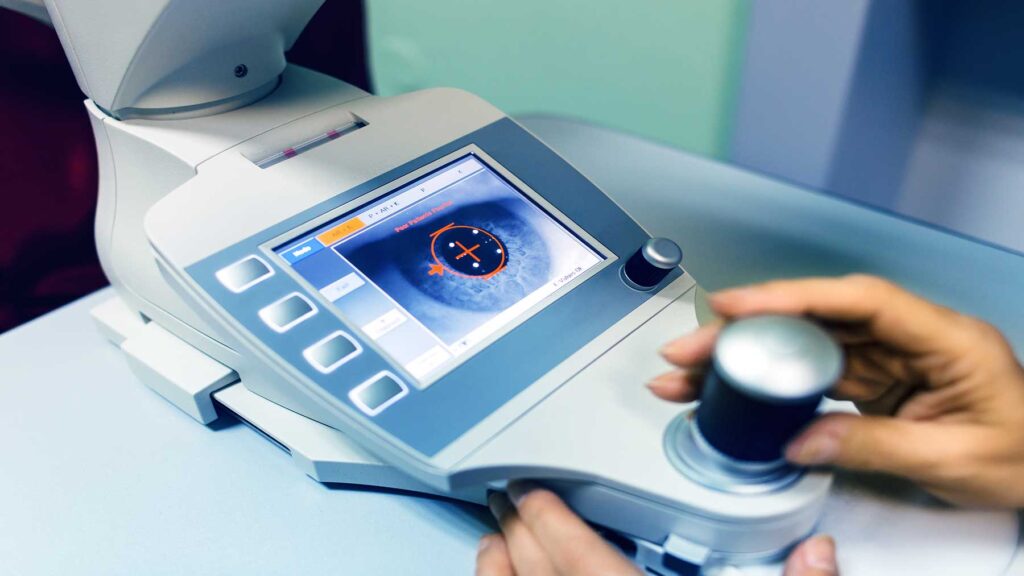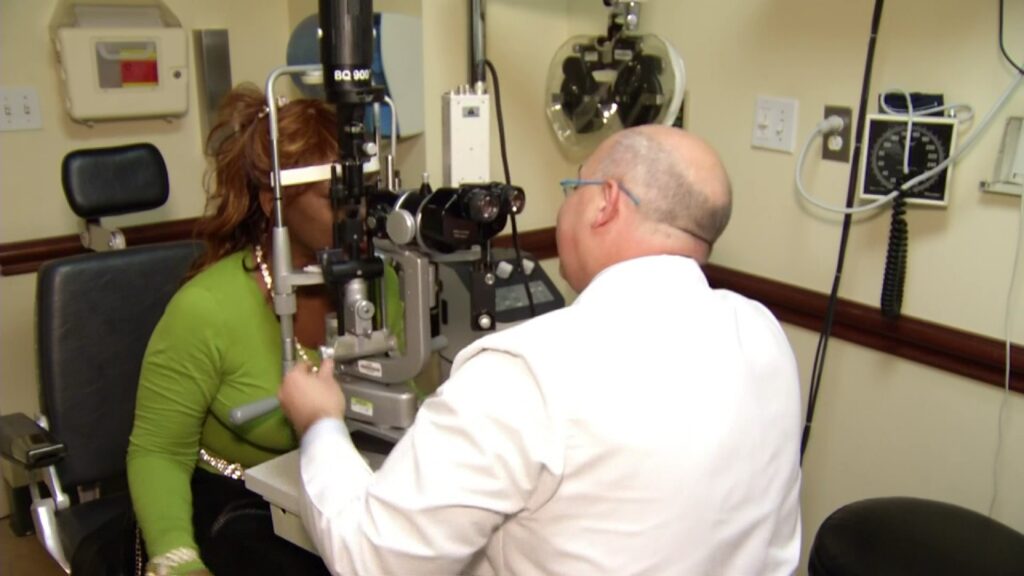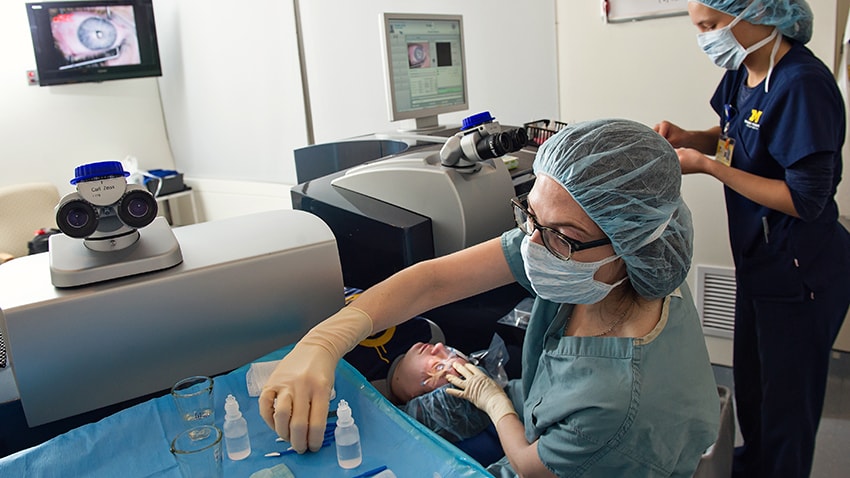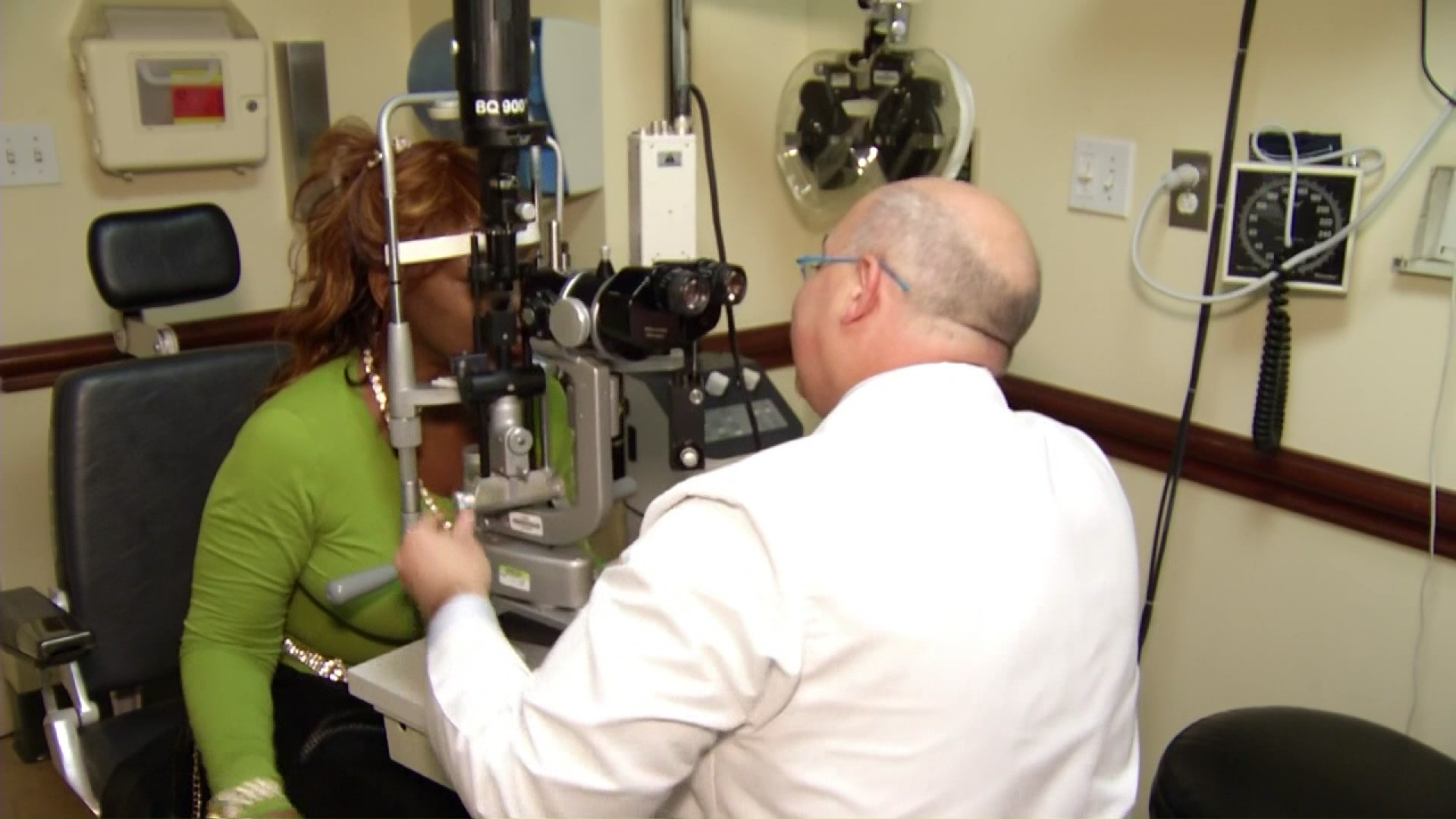Glaucoma is a prevalent eye disease that affects millions of people worldwide. It is the leading cause of irreversible blindness, making it crucial to identify and utilize the latest advancements in surgical techniques to preserve vision. In this article, we will explore the impact of glaucoma on vision, traditional approaches to treatment, the evolution of glaucoma surgery techniques, the latest advancements in glaucoma surgery, the benefits and risks associated with modern surgeries, and the future of glaucoma treatment.
Understanding Glaucoma: A Brief Overview
Glaucoma is a progressive eye disorder characterized by damage to the optic nerve, usually resulting from increased pressure within the eye. This increased pressure, known as intraocular pressure (IOP), can cause irreversible damage to the optic nerve, ultimately leading to vision loss. As glaucoma visual field typically progresses slowly and without symptoms, early detection and treatment are crucial.
The Impact of Glaucoma on Vision
When glaucoma is left untreated or unmanaged, it can result in permanent vision loss. Initially, individuals may experience peripheral vision loss, making it challenging to navigate their surroundings. Over time, the central vision may also be affected, preventing individuals from performing daily activities such as reading, driving, or recognizing faces.
The Traditional Approach to Glaucoma Treatment
Traditionally, glaucoma is managed through the use of medications, such as eye drops, that help lower IOP and slow down disease progression. However, medication adherence can be challenging, and some individuals may experience side effects. In cases where medication is insufficient in controlling the disease, surgical intervention may be required.

It is important to note that glaucoma is not a single disease, but rather a group of eye conditions that can lead to optic nerve damage. The most common type of glaucoma is called primary open-angle glaucoma, which accounts for about 90% of all glaucoma cases. This type of glaucoma develops gradually and is often associated with aging. Another type of glaucoma is angle-closure glaucoma, which occurs when the drainage angle of the eye becomes blocked, leading to a sudden increase in IOP. This type of glaucoma is considered a medical emergency and requires immediate treatment to prevent permanent vision loss.
See Also: Exploring the Landscape of Glaucoma Surgery
While the exact cause of glaucoma is still unknown, several risk factors have been identified. These include age, family history of glaucoma, certain medical conditions such as diabetes and high blood pressure, and prolonged use of corticosteroids. Additionally, individuals of African, Asian, and Hispanic descent are at a higher risk of developing glaucoma compared to individuals of European descent.
The Evolution of Glaucoma Surgery Techniques
In recent years, there have been significant advancements in glaucoma surgery techniques aimed at improving surgical outcomes and enhancing patient experience. These advancements have paved the way for early surgical interventions and minimally invasive procedures as effective alternatives to traditional surgeries.
Early Surgical Interventions for Glaucoma
Early surgical interventions, such as trabeculectomy and tube shunt implants, have been used to lower IOP (intraocular pressure) and preserve vision in patients with more advanced glaucoma. Trabeculectomy involves creating a small opening in the eye to allow fluid to drain, while tube shunt implants involve placing a small tube in the eye to redirect fluid and reduce pressure. These procedures create new drainage pathways for the aqueous humor, the fluid inside the eye, to reduce intraocular pressure, alleviating stress on the optic nerve.
Trabeculectomy is considered a gold standard procedure for glaucoma treatment and has been performed for decades. It has shown long-term success in reducing intraocular pressure and preserving vision. However, it is an invasive procedure that carries certain risks, such as infection and scarring. Tube shunt implants, on the other hand, are often considered when trabeculectomy is not suitable or has failed to adequately control intraocular pressure.
The Shift Towards Minimally Invasive Procedures
Minimally invasive procedures, such as selective laser trabeculoplasty (SLT) and micro-invasive glaucoma surgery (MIGS), have gained popularity in recent years due to their reduced risk, shorter recovery time, and ability to be performed as outpatient procedures. These techniques aim to improve drainage pathways and reduce IOP, preserving the optic nerve and vision.
Selective laser trabeculoplasty (SLT) is a non-invasive procedure that uses laser energy to target specific cells in the trabecular meshwork, the drainage system of the eye. By selectively treating these cells, SLT stimulates a healing response that improves the outflow of fluid and reduces intraocular pressure. SLT has shown promising results in lowering IOP and can be repeated if necessary.
Micro-invasive glaucoma surgery (MIGS) encompasses a range of procedures that are less invasive than traditional surgeries but still aim to improve drainage and reduce IOP. These procedures typically involve the implantation of tiny devices or stents to enhance the natural drainage pathways of the eye. MIGS procedures are often performed in conjunction with cataract surgery, making them a convenient option for patients with both conditions.
While MIGS procedures are generally considered safe and effective, they may not be suitable for all patients or all types of glaucoma. The choice of surgical technique depends on various factors, including the severity of glaucoma, the patient’s overall health, and the surgeon’s expertise. It is essential for patients to consult with their ophthalmologist to determine the most appropriate surgical approach for their specific case.

The Latest Advancements in Glaucoma Surgery
Ongoing research and technological advancements have led to further innovations in glaucoma surgery techniques, offering even more effective alternatives to traditional approaches. Two notable advancements include innovations in laser surgery and the rise of micro-invasive glaucoma surgery (MIGS).
Innovations in Laser Surgery
Laser surgery has undergone significant advancements, enabling precise and targeted treatment for glaucoma patients. Laser trabeculoplasty techniques, such as argon laser trabeculoplasty (ALT) and selective laser trabeculoplasty (SLT), have revolutionized the field of glaucoma treatment. These procedures utilize focused laser energy to improve drainage and reduce intraocular pressure (IOP) without the need for traditional incisional surgery.
ALT, the first laser trabeculoplasty technique introduced, has been widely used for many years. However, SLT has gained popularity due to its ability to selectively target specific cells in the trabecular meshwork, minimizing damage to surrounding tissues. This precision allows for a higher level of accuracy and potentially faster recovery compared to traditional surgical options.
The Rise of Micro-Invasive Glaucoma Surgery (MIGS)
MIGS encompasses a range of minimally invasive procedures that aim to lower IOP and protect the optic nerve. These procedures typically involve the use of tiny devices or implants that enhance the natural drainage pathways of the eye. The introduction of MIGS has revolutionized the treatment landscape for glaucoma patients, offering a less invasive alternative to traditional surgeries.
One notable MIGS procedure is trabecular micro-bypass stent implantation. This procedure involves the insertion of a small stent into the trabecular meshwork, creating a new pathway for aqueous humor to drain from the eye. The stent is designed to maintain the natural outflow of fluid, reducing IOP and potentially decreasing the need for glaucoma medications.
Another innovative MIGS technique is the use of endoscopic cyclophotocoagulation (ECP). This procedure involves the use of a tiny endoscope to visualize and treat the ciliary body, which produces the aqueous humor. By applying laser energy to the ciliary body, ECP can reduce the production of aqueous humor, effectively lowering IOP.
MIGS procedures can also be performed alongside cataract surgery, offering an opportunity to address both conditions simultaneously. This combined approach not only improves patient outcomes but also provides convenience by reducing the need for multiple surgeries and recovery periods.
As research and technological advancements continue to progress, the field of glaucoma surgery is poised for further breakthroughs. These advancements hold promise for improved treatment outcomes, enhanced patient experience, and a brighter future for individuals living with glaucoma.

The Benefits and Risks of Modern Glaucoma Surgeries
Evaluating the Effectiveness of New Techniques
The effectiveness of new glaucoma surgery techniques is a crucial consideration for both patients and healthcare providers. Glaucoma, a progressive eye disease that can lead to vision loss, requires careful management to preserve visual function. With advancements in surgical techniques, studies have shown promising results in intraocular pressure (IOP) reduction and preservation of vision. These new techniques offer hope for patients seeking long-term relief from the debilitating effects of glaucoma.
One such innovative approach is minimally invasive glaucoma surgery (MIGS). MIGS procedures involve the use of microscopic incisions and specialized devices to enhance fluid drainage in the eye, reducing IOP. These procedures are often performed in conjunction with cataract surgery, providing patients with a dual benefit. The combination of cataract removal and glaucoma treatment not only improves visual acuity but also helps manage the underlying glaucoma condition.
Potential Complications and How to Mitigate Them
As with any surgical procedure, there are risks associated with glaucoma surgeries. While modern techniques aim to minimize complications, it is important for patients to be aware of potential risks and how they can be mitigated. Common complications include infection, bleeding, inflammation, and changes in visual acuity.
To mitigate the risk of infection, surgeons adhere to strict sterile protocols during the procedure. Antibiotic eye drops may also be prescribed post-surgery to prevent any potential infections. Bleeding, another potential complication, is minimized through careful surgical techniques and the use of specialized instruments that minimize tissue trauma.
Inflammation is a natural response to surgery, but it can be managed with anti-inflammatory medications and close monitoring by the ophthalmologist. Changes in visual acuity, although rare, can occur due to factors such as corneal swelling or changes in the eye’s refractive power. These changes are usually temporary and resolve over time, but it is essential for patients to have a thorough discussion with their ophthalmologist to understand the potential risks and benefits specific to their case.
While glaucoma surgeries offer promising outcomes, it is important for patients to approach the decision-making process with a comprehensive understanding of the benefits and risks involved. Ongoing research and comparative studies are being conducted to determine the most effective approach for each individual patient, ensuring that the best possible outcomes are achieved in the management of glaucoma.
The Future of Glaucoma Treatment
Emerging Technologies in Glaucoma Surgery
The future of glaucoma treatment holds promise with the emergence of technologies such as minimally invasive glaucoma devices (MIGDs), sustained-release drug delivery systems, and improvements in imaging technologies for early disease detection. These advancements will continue to shape glaucoma surgery techniques, offering even more personalized and effective treatment options.
The Role of Artificial Intelligence in Glaucoma Treatment
Artificial intelligence (AI) has the potential to revolutionize glaucoma treatment by assisting in early detection, monitoring disease progression, and optimizing treatment plans. AI algorithms can analyze large amounts of patient data to identify patterns and assist ophthalmologists in making informed decisions regarding patient care. The integration of AI systems into glaucoma treatment holds the promise of improved patient outcomes and more efficient healthcare delivery.In conclusion, preserving vision and effectively managing glaucoma require staying at the forefront of surgical techniques. The latest advancements in glaucoma surgery, including minimally invasive procedures and innovations in laser surgery, offer patients improved treatment options with reduced risks and faster recovery times. As research continues to uncover new techniques and technologies, the future of glaucoma treatment holds exciting possibilities for personalized care and better patient outcomes.

